If you’re on a quest for spiritual discoveries in Bali, come along to a traditional Balinese Hindu ceremony and experience the mesmerising deep trance states of the Barong dance.
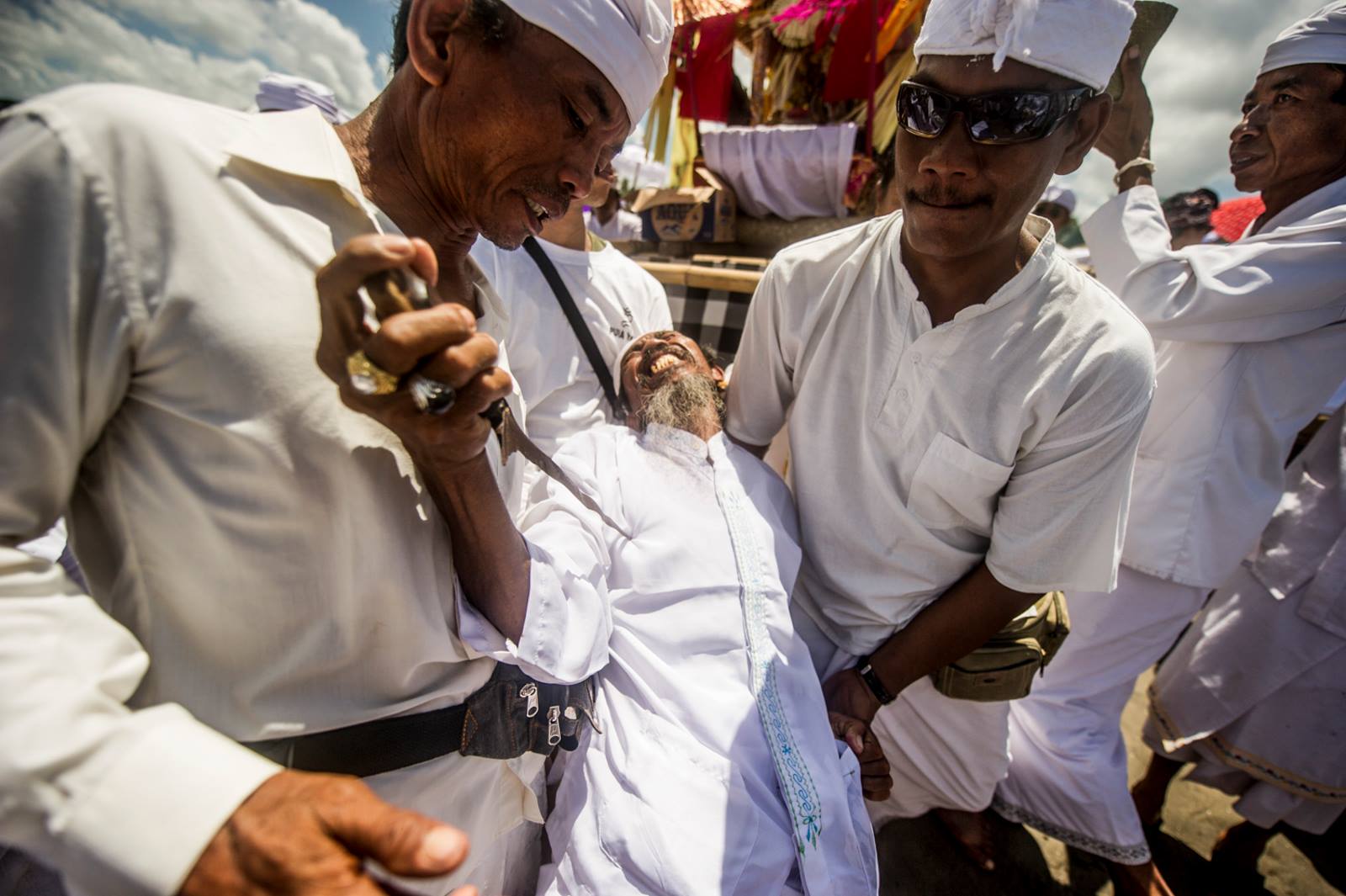
Balinese Spiritual Dances and Deep Trance States
Traditional spiritual dances in Bali take place during big ceremonies like Tumpak Wayang, which translates as 'Day of Puppet', and Odalan Pura which is when Balinese temples celebrate their birthdays (for, in Bali, every single temple has its own birthday).
These dances gain their fame from the profound deep trance experiences they induce in audience members whose bodies become conduits for the realm of energy.
Roles and Responsibilities during Spiritual Dances in Bali
Setting up such events requires careful preparation, and its attendees are actively involved in various organizational tasks in advance of the day of the ceremony. There are strict rules that everyone must adhere to during those events, and the participants wholeheartedly comply with them and dutifully perform the roles assigned to them. The meticulous setting is important as it sets the scene for the manifestation of the energy realm.
These events are guided by special priests, known as ‘mangku’, who manage the overall energy of the event. During the dance they circulate among the audience, spraying the holy water on the participants.
There are also the handlers. Their role involves physically supporting those that enter tranced states.
Then there are the performers who perform roles from the Balinese Hindu lore such as Barong and Rangda. The performers may or may not go into a deep trance state. I once witnessed an anecdotal story where the person dressed as the hind legs of the Barong entered a deep trance, and the back part of the Barong had to be guided by the helpers during the rest of the dance.
There is the gamelan orchestra and the singers creating the acoustic backdrop with rhythms reaching up to 150 BPM.
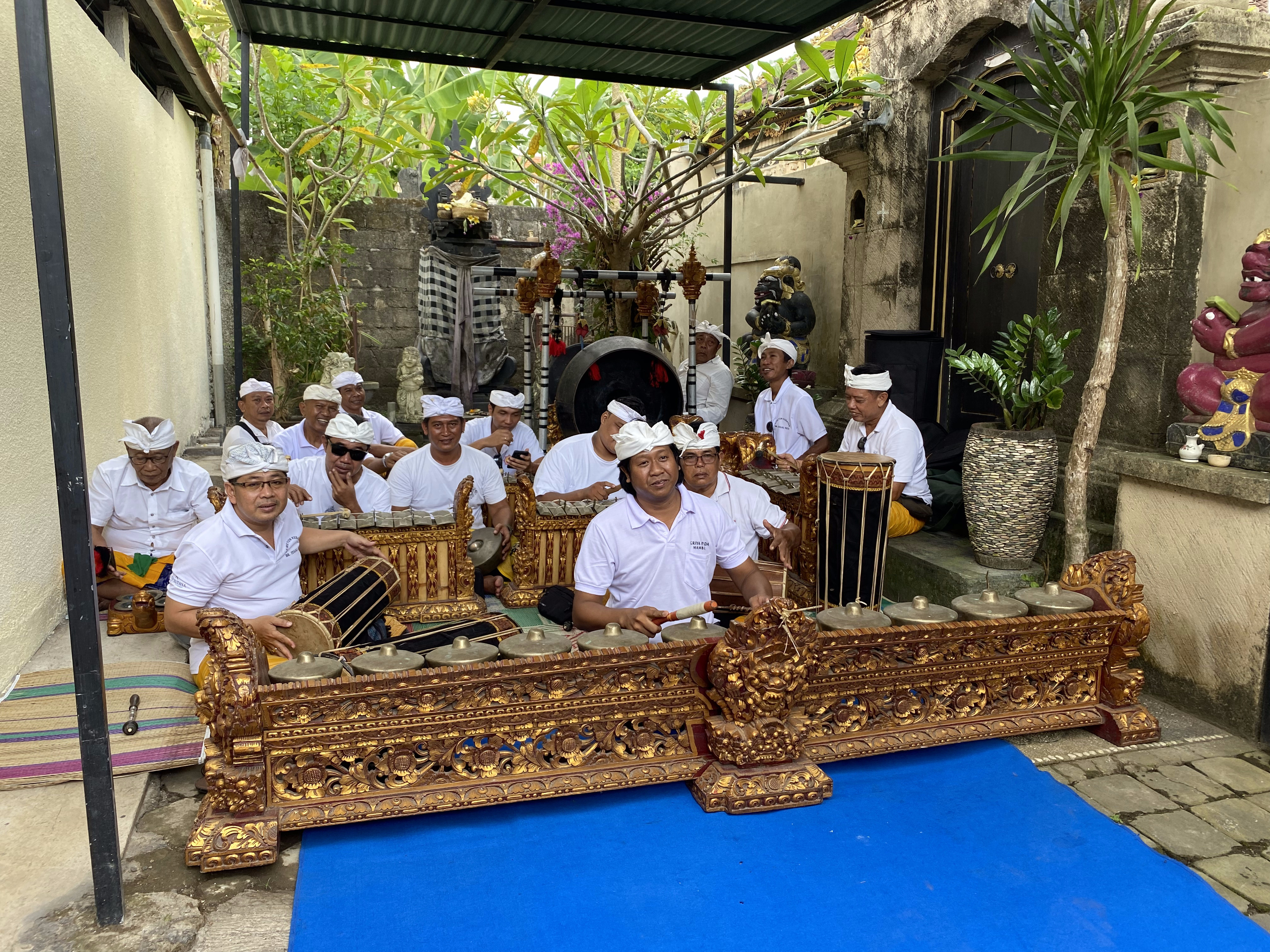
And finally, there is the audience. Because these dances take place during big ceremonies, there is a large number of people that attend them. Members of the audience are active participants and many enter into deep trance states, though not everyone. In fact, many Balinese Hindus report to have never gone into a deep trance state at these events, and many doubt they would ever do that in the future. Choosing to enter the deep trance state or not is completely voluntary.
Entering Deep Trance States
The dances start with performers going through the set motions of the show. At some point, as the main dance reaches its culmination, the music intensifies. It becomes faster and louder, and one after another, members of the audience start entering into deep trance.
The belief is that spirits enter their bodies, leading them to behave in a range of ways. Some scream, their bodies convoluted, as if letting out the pain and anguish of the spirits that possess them. Others jump to their feet in an attempt to escape, stumbling and falling into the seated audience. Some begin stabbing their bodies with traditional daggers ('keris') and burn themselves with incense and ceremonial fires. Yet others float gracefully, their bodies engaged in traditional Balinese dance movements.
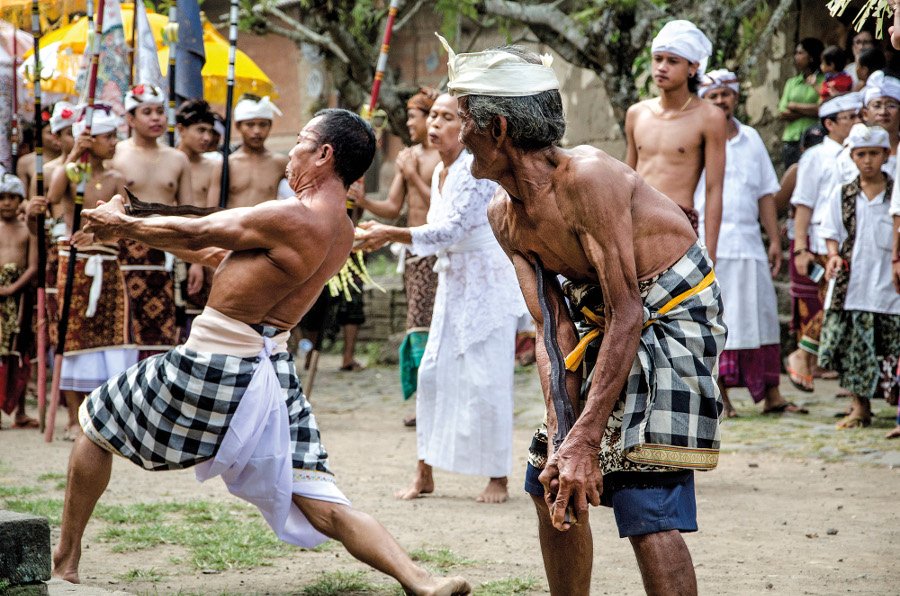
Management of Trance States
Every single person who enters this state is supported at all times by handlers who self-assign to members of the audience from the moment they are spotted entering the state of deep trance. The handlers then accompany them for the entire duration of their trance experience.
In the Balinese language, these handlers are called 'pengaya', which translates to 'add-on'. As the name suggests, reckoning with the spirits alone is not permitted. The Balinese prioritise creating a safe and supportive environment for those experiencing deep trance states.
The handlers hold tight to the experiencers at all times, usually via a gentle embrace, even if the experiencers appear to be in relatively mellow states. This is done to ensure that, in the event that the spirit flips and does something unexpected (which they do rather frequently and often violently), the experiencer would not get hurt. Trance experiencers who rage or try to escape are usually restrained by more than one handler.

Holy water is then passed around signifying the end of the reign of the spiritual beings. They scream and fight, unwilling to take the magic potion. Eventually, the holy water gets administered, and the people fall out of the deep trance state. Their bodies soften, and they collapse into the arms of their handlers. They are laid down on the ground, with their upper bodies resting on their handler’s legs. The add-ons stay with them until they fully come out of their deep trance state.
Trance Practices Beyond Bali
The deep trance practices are by no means unique to Bali. Cultures around the world use trance (either with or without state-altering substances) during rituals and ceremonies.
Attempts to create these states outside traditional settings are also abundant. Unfortunately, however, instances when induced trance sessions have negative effects on the experiencers abound.
Trance in Medical and Psychological Research
During the late 19th century and early 20th century, there was a boom in experimental medical studies in the West. These studies aimed to understand hysteria - a condition when the sufferers can enter trance-like states. This research was later found to be unethical, but it revealed a great deal about the dynamics between individuals that enter these states and their environment, most notably the doctors that conducted these studies. (For a very intimate close-up account of the hysteria studies, I recommend Siri Hustvedt's novel 'What I Loved'.)
Trance in Practices of Contemporary Religious Cults
A contemporary example are practices of religious cults. For example, trance-induced practices of certain churches in parts of East Africa are sometimes taken to dangerous extremes by pastors who lead sessions where the church-goers go into a state of trance. What they manifest during these states depends by and large on the guidance of their pastors.
Supervision and Safety Concerns for Trance States Experiencers
What unites the former medical studies and the practices of religious cults is that they do not hold safe spaces for the experiencers. Through either a poor understanding of the complexities associated with those states or a complete disregard for the experiencers, these are nothing but instances of exploitation for personal benefits.
What’s different about the Balinese deep trance sessions at religious events is that they are characterised by a high level of understanding of these states. They place the utter-most importance on the participants’ safety by exercising a great deal of supervisory control, providing a set of clear and well-defined boundaries, and having unanimous support from the community.
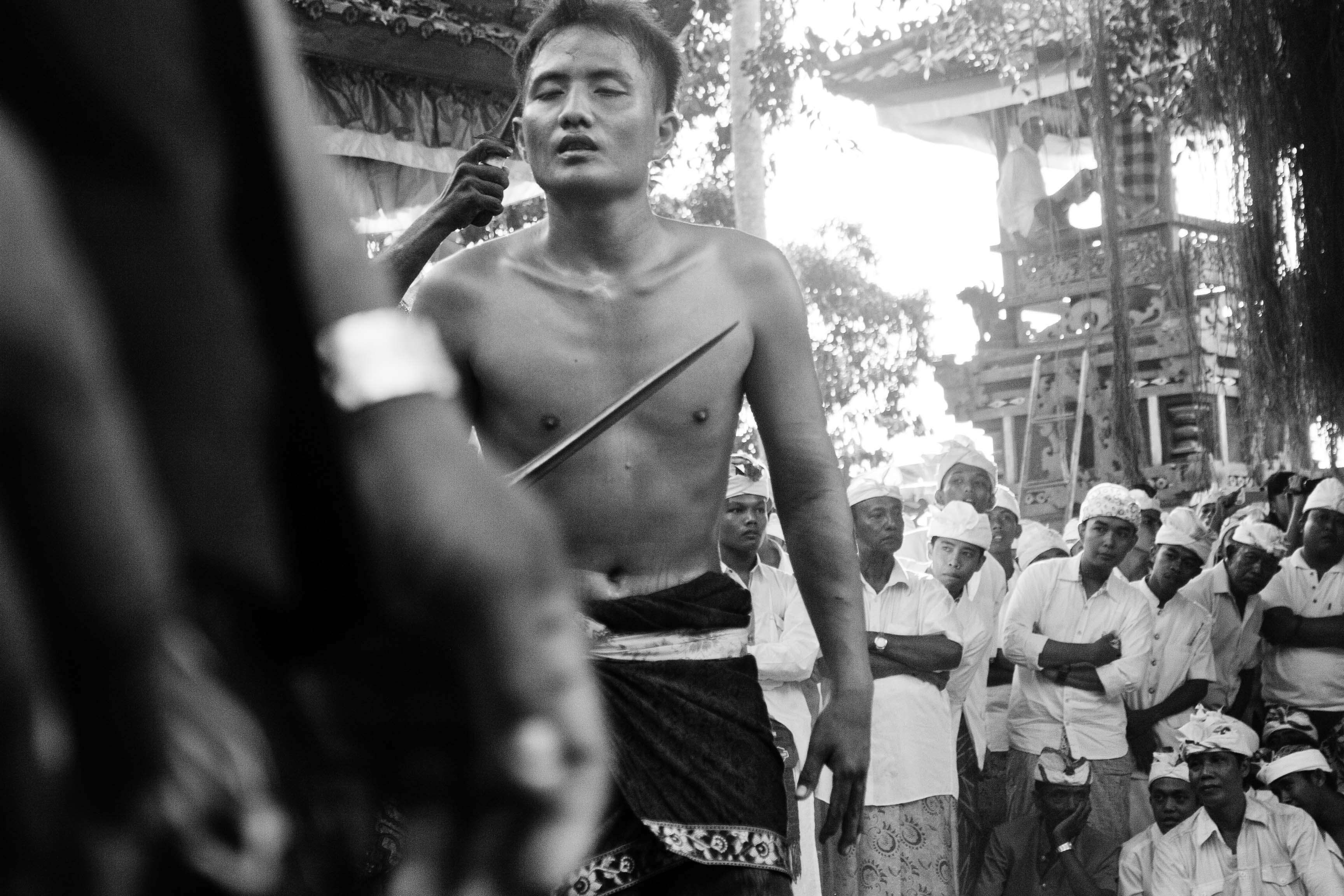
And I really want to emphasise, again, that supervisory control, boundaries, and community support are essential during deep trance sessions. An example of lack of these is a recent nude solo appearance of a European woman in a state of trance at a Balinese traditional event.
A Parting Note for Spiritual Explorers
And here is something that I want to leave with you, spiritual adventures and explorers. Whether in Bali or elsewhere, keep in mind that if you allow others to manipulate your states, they gain a level of control over your experience. So, make sure these people have pure intentions. Remember that if something does not feel right, it is your call to set boundaries. And, have your trusted add-on with you for support.
Ultimately, the Bali energy realm is crafted and maintained by the island’s inhabitants, including you. And we all play a range of roles to ensure the perfect balance.
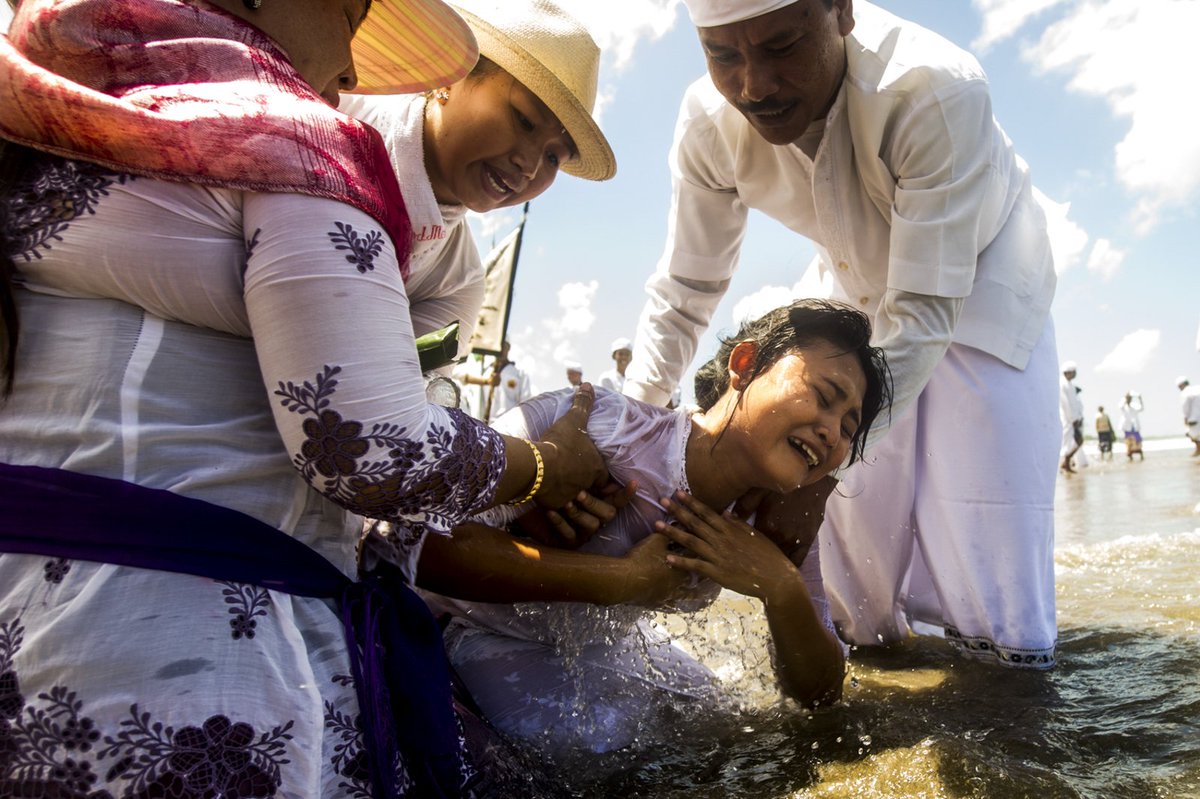
You can add one right now!